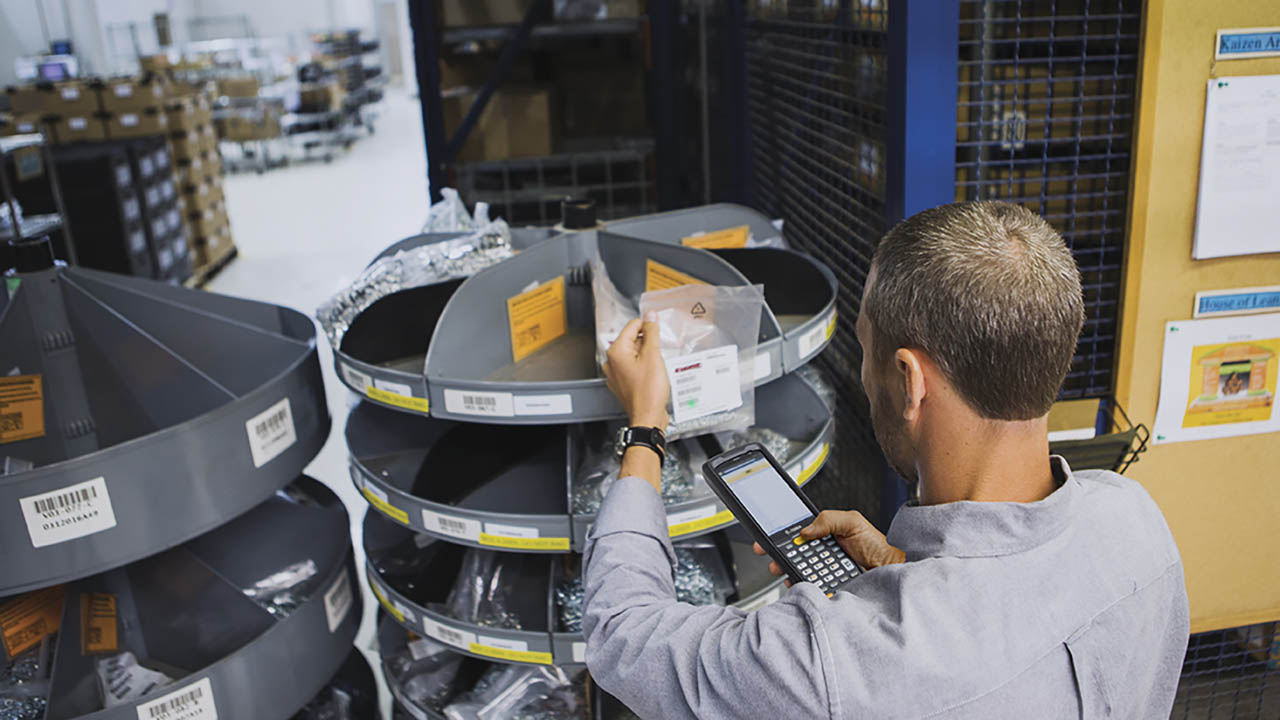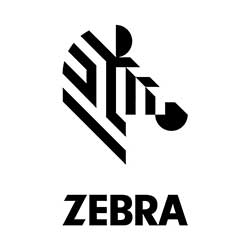
Ask the Expert: “Is There a Way to Guarantee That the Enterprise-Grade Android Devices I Buy Today will Be Compatible with Future Android Operating Systems?”
“Is there a way to guarantee that the enterprise-grade Android devices I buy today from Zebra will be compatible with future versions of the Android OS, specifically Android 12 (S) and Android 13 (T)?”
This is a question that Zebra sales teams and solution architects receive all the time. Rightfully so. Our customers want to know that the money they’re spending on Zebra mobility solutions will deliver a significant, long-term return on investment (ROI). Their operational stability and security depend heavily on the availability of handheld mobile computers, as does the safety of front-line workers. So, we reached out to Bruce Willins, a Technology Solutions Engineering Fellow here at Zebra, to see if he could answer this frequently asked question.
If you recall, Bruce sat down with us last year to discuss the Windows®-to-Android™ migration that many organizations have been undertaking in the last 12-18 months as Microsoft ended support for various iterations of its Windows Mobile and Windows CE operations systems (OS). Since the issue at hand now concerns the return on investment (ROI) derived from these newly-deployed Android mobility solutions, we thought he would be the best person to explain when and how support for each new Android OS version is determined.
Your Edge Blog Team: Bruce, as you know all too well, many organizations that used Windows mobile devices for decades have had no choice but to invest in new Android mobility solutions in recent months. You’ve spoken before about what Zebra has been doing to make the transition easier for customers, but since things have been moving quite quickly since then, we thought we’d start by asking how the Windows-to-Android migration is going.
Bruce: We’ve been hearing very positive feedback from customers about the experience, which is reassuring given how challenging such a dramatic change could have been on both small businesses and large enterprises. The Zebra team has been hard at work behind the scenes (and out on the front lines with our customers) to ensure both the hardware and software migrations go smoothly.
Remember, though, this isn’t just about changing an operating system because Microsoft ended support of its legacy mobile operating systems or because of growing security needs. Our customers are gaining significant advantages by embracing Android: for example, they’re running more applications at once and seeing improved scanning performance, wireless performance and battery life. Onboarding and training have been accelerated, and customers are now able to deploy more advanced solutions like augmented reality, real-time collaboration, and even social distancing and contact tracing programs.
Your Edge Blog Team: Is there one thing in particular that you think has contributed to the ease of migration?
Bruce: It’s really a combination of things, so it’s tough to choose just one … but I think the top reason why our customers are successfully migrating to Android (and quickly adopting new Android OS versions once they are released) is the special relationship that Zebra has with both Google and Qualcomm. In fact, I would argue that our relationship with both companies is the strongest in the industry. We sell over five times more Android-powered enterprise devices each year than our nearest direct competitor. That type of leadership doesn’t happen accidently!
We have been collaborating closely with Google for nearly a decade, and we were the first enterprise device manufacturer to advise our customers, clearly and consistently, about the future of Android in this category. More importantly, our relationship with Google and Qualcomm has allowed Zebra to introduce several unique innovations that help our customers deploy Android in their most critical front-line workflows.
For example, in April 2017, we were the first to introduce a manufacturer-guaranteed extended security solution (LifeGuard™ for Android) that delivers aggressive security/patch updates which far exceed the support offered on consumer Android devices and gives customers control over when and how devices are updated. Zebra was also the first to rollout Android 10 on enterprise-grade mobile devices, and we have released Android 10 on all our products built on the Qualcomm SD660 chipset.
There are many more firsts that I won’t list here, several of which are even more technical in nature. But, as you can see, our relationship with Google and Qualcomm really is special – and game-changing for our customers and partners.
Your Edge Blog Team: That’s great to hear. We have to ask though, mostly because customers have been asking: will Android 10 devices – or even some of the devices currently running earlier Android OS versions – be upgradeable to Android 11 (R) or Android 12 (S)?
Bruce: Yes. The code base for Android 11 (A11), or Android R, was released to us (as a manufacturer) in September 2020 to incorporate into our SD660-based products. An A11 beta release is available for download on the Zebra website.
Expect additional A11 releases to follow in the middle of this year. Additionally, Qualcomm recently affirmed Android 12 (T) support on the Qualcomm SD660 chipset. Android 12 is targeted for open source in early Q4 2021, and we expect to start making it available on our SD660-based products sometime in the first half of 2022.
For now, as I mentioned, we just released the industry’s first new enterprise grade mobile computers with Android 10 support– the TC21/TC26 and TC52x/TC57x.
Your Edge Blog Team: What about Android 13 (T)? Is Zebra committed to releasing those future OS versions on its devices once they’re available?
Bruce: Qualcomm has stated it “intends” to support Android 13 but has not yet received requirements for this OS release from Google and cannot therefore make a firm commitment at this time. Qualcomm has typically confirmed support for an OS release about 12 months prior to its open source which, for Android 13, is expected in early Q4 2022.
We know the time and money our customers spend procuring, configuring, securing and deploying new mobility solutions is precious. So, unlike consumer device manufacturers, which rely on churn for solvency, we do everything in our power to reduce churn. We don’t want customers to call us in a year or two to replace their mobile devices. We want them to be able to scale their mobility solutions year after year to support their growing workforces and new applications as demand for their goods and services (hopefully) continues to rise.
In fact, if you visit the Success Stories page on our website, you will see a common theme in the benefits that Zebra Android mobility solutions provide: scalability, expandability and longevity.
That being said, no one – and I mean no one – can say with complete certainty or even attempt to guarantee that the enterprise-grade Android mobile device that you buy from anyone today will be compatible with future Android OS releases that have yet to be defined and committed to by the respective silicon vendor.
Your Edge Blog Team: Why is that?
Bruce: There is a chain of dependencies that must come together to produce an Android OS release for any device. Since most of Zebra’s products ship on a Qualcomm system on a chip (SoC), we build our Android OS releases using a Qualcomm-provided board support package (BSP). But Qualcomm’s ability to produce a BSP for a specific OS release and SoC processor depends on the Android requirements defined from Google, and Google derives its requirements from market trends, which are continually changing. So, when we ask Qualcomm about future BSP releases, they say that their requirements depend on the future Android OS requirements defined by Google. Google, in turn, says Android OS requirements will depend on future market requirements that are not yet determined but may include memory, CPU speed and the types of applications which support customers’ rapidly evolving business operations. Past experience has shown that silicon vendors typically make a determination and are willing to commit to an OS release about 12 months prior to its open source.
Your Edge Blog Team: If Qualcomm can support future OS releases, then Zebra will do everything it can to support them too?
Bruce: Absolutely. Once Google releases its requirements and Qualcomm confirms its BSP availability, we move quite quickly to make new software, security or feature enhancements available to customers who want to upgrade their devices to the latest and greatest Android OS. Our goal is to help them maximize their return on investment (ROI). We want the Zebra devices our customers invest in today to retain the highest performance level possible for as long as possible.
Your Edge Blog Team: Do you see changes that would allow Qualcomm or other silicon vendors to better predict or forecast future OS Support?
Bruce: I do. Qualcomm put out a press release in December talking about a new collaborative program with Google that could reduce the lag times to release each new OS and provide more deterministic future support by freezing select components of the OS. For those who are familiar with Google’s project “Treble,” this is an extension of that initiative. I know we’ll all be eagerly watching to see how this evolves.
###
Editor’s Note:
If you still have questions about when and how Zebra is able to confirm compatibility with future Android OS versions, feel free to send us a note here or contact your Zebra representative.
You can also find a list of current operating systems for the entire Zebra Android portfolio here.
###
Related Read:

Zebra’s “Your Edge” Blog Team
The “Your Edge” Blog Team is comprised of content curators and editors from Zebra’s Global PR, Thought Leadership and Advocacy team. Our goal is to connect you with the industry experts best-versed on the issues, trends and solutions that impact your business. We will collectively deliver critical news analysis, exclusive insights on the state of your industry, and guidance on how your organization can leverage a number of different proven technology platforms and strategies to capture your edge.






